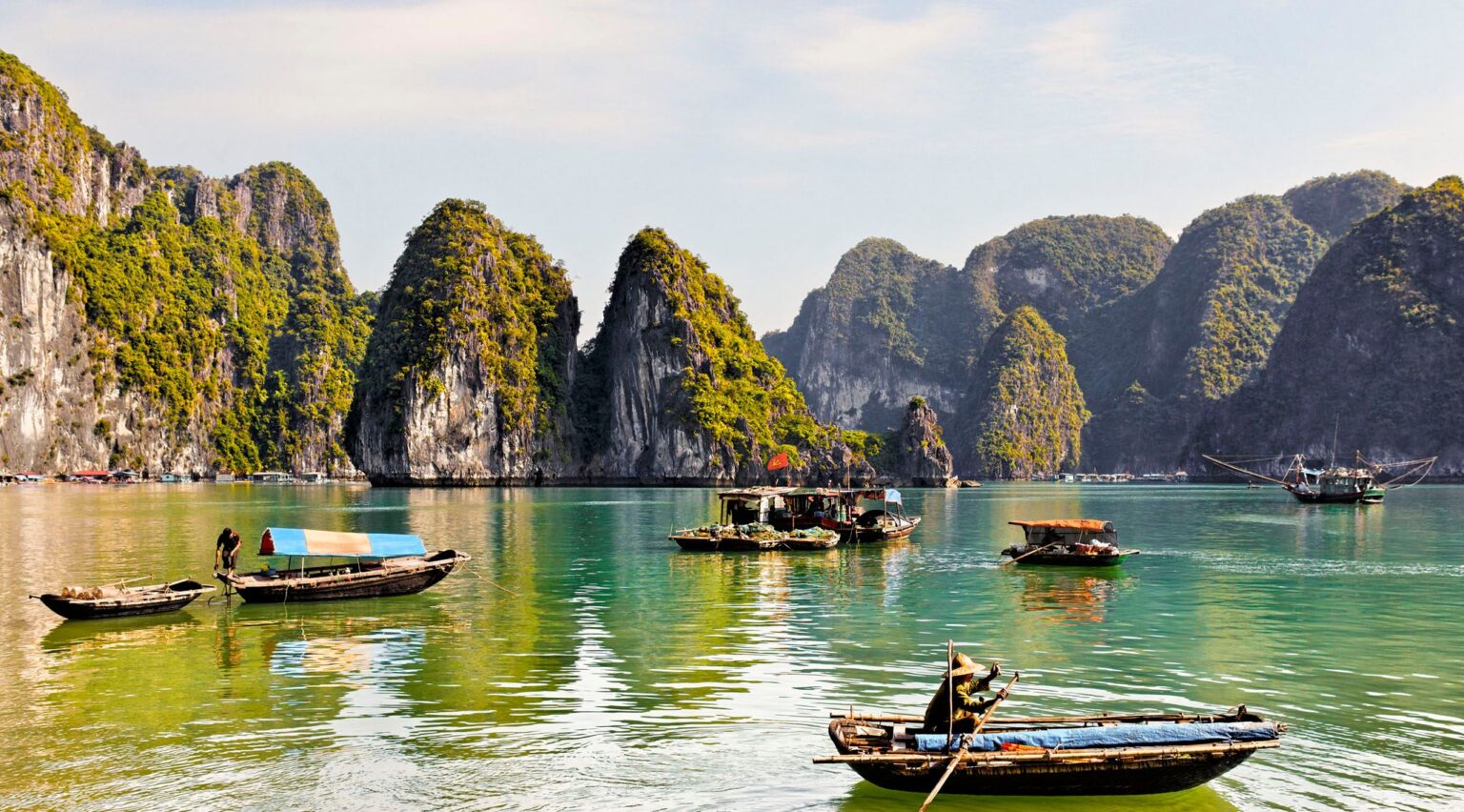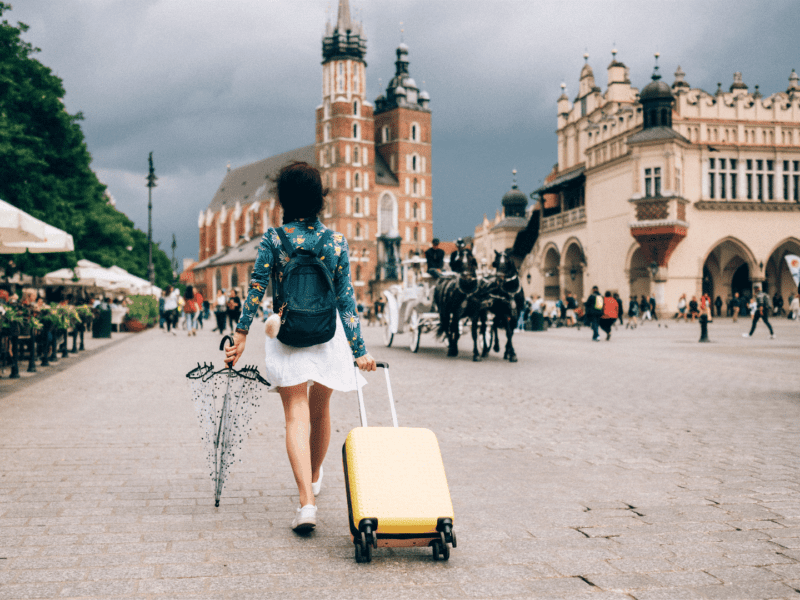
How Tourists Travel to Southeast Asia, Spend Time in Resorts in Vietnam or Thailand
Southeast Asia, a captivating region known for its rich cultural tapestry and breathtaking landscapes, has become a magnet for travelers seeking a perfect blend of relaxation and adventure. In this article, we’ll delve into why tourists are increasingly choosing Southeast Asia, with a specific focus on the enchanting resorts nestled in the heart of Vietnam and Thailand.
I. Introduction
A. Definition of Southeast Asia
Southeast Asia comprises a diverse group of countries, each with its own unique charm. From the bustling streets of Bangkok to the serene beaches of Bali, the region offers a plethora of experiences for every type of traveler.
B. Growing Tourism in the Region
Over the past decade, tourism in Southeast Asia has witnessed unprecedented growth. Travelers are drawn to the region’s exotic allure, vibrant cultures, and warm hospitality.
C. Popular Tourist Destinations
The region boasts iconic destinations like Angkor Wat in Cambodia, Halong Bay in Vietnam, and the vibrant street markets of Bangkok. These attractions, along with many others, contribute to Southeast Asia’s popularity among global tourists.
II. Why Choose Southeast Asia for Travel?
A. Cultural Diversity
One of the primary reasons tourists flock to Southeast Asia is its remarkable cultural diversity. From ancient temples to modern cities, the region seamlessly blends tradition with innovation.
B. Exotic Cuisine
Food enthusiasts find Southeast Asia a gastronomic paradise. Thai curries, Vietnamese pho, and Indonesian satay are just a few examples of the delectable offerings that await culinary adventurers.
C. Affordable Travel Options
Southeast Asia provides a budget-friendly travel experience without compromising on quality. Accommodations, transportation, and activities are often more affordable compared to many other tourist destinations.
III. Exploring Resorts in Vietnam
A. Introduction to Vietnam’s Tourism
Vietnam, with its breathtaking landscapes and compelling history, has emerged as a top tourist destination. The country’s tourism sector has seen significant growth, with a focus on providing unique and luxurious resort experiences.
B. Top Resorts in Vietnam
From the tranquil beaches of Da Nang to the lush hills of Sapa, Vietnam offers an array of world-class resorts. Names like InterContinental Danang Sun Peninsula Resort and Amanoi showcase the country’s commitment to providing a luxurious stay for visitors.
C. Unique Experiences in Vietnamese Resorts
Vietnamese resorts go beyond comfortable accommodations. Visitors can immerse themselves in local culture, enjoy spa treatments inspired by ancient traditions, and savor exquisite Vietnamese cuisine.
IV. Tropical Paradise: Resorts in Thailand
A. Overview of Thai Tourism
Thailand, often referred to as the “Land of Smiles,” is a perennial favorite among travelers. Its vibrant cities, pristine beaches, and cultural richness make it a must-visit destination.
B. Highlighting Thailand’s Resorts
Resorts like Four Seasons Tented Camp Golden Triangle and Rayavadee in Krabi exemplify the luxury and hospitality Thailand is known for. These resorts offer a perfect blend of opulence and natural beauty.
C. Adventures Beyond the Resorts
While resorts provide unparalleled comfort, Thailand’s allure extends beyond the confines of luxurious accommodations. Travelers can explore bustling markets, engage in water sports, and discover ancient temples. Discover more about the sport of ‘บาคาร่า‘ and delve into its intricacies to enhance your understanding of this popular pastime.
V. Planning a Trip to Southeast Asia
A. Travel Itinerary Tips
Crafting a well-planned itinerary is crucial for a memorable Southeast Asian adventure. Balancing time between cultural excursions, leisure, and exploration ensures a fulfilling experience.
B. Budget-Friendly Options
For budget-conscious travelers, Southeast Asia provides a myriad of affordable options. From street food to budget accommodations, there are ways to enjoy the region without breaking the bank.
C. Best Time to Visit
Understanding the climatic variations in different parts of Southeast Asia is essential for planning the perfect trip. The region experiences monsoons and dry seasons, and timing can significantly impact the travel experience.
VI. Immersing in Local Culture
A. Interacting with Locals
Southeast Asians are known for their warm hospitality. Engaging with locals, learning about their customs, and participating in traditional ceremonies enrich the travel experience.
B. Participating in Festivals
The region hosts a plethora of festivals throughout the year. From Songkran in Thailand to Tet in Vietnam, participating in these celebrations provides a deeper understanding of local traditions.
C. Exploring Local Markets
The vibrant markets of Southeast Asia are treasure troves of unique items. Exploring these markets not only offers a chance to shop for souvenirs but also provides insights into the local way of life.
VII. Navigating Language Barriers
A. Language Diversity in Southeast Asia
Southeast Asia boasts a rich linguistic landscape. While English is widely spoken in tourist areas, learning a few local phrases enhances the travel experience and fosters cultural connections.
B. Useful Travel Phrases
Mastering basic phrases like greetings, thank you, and asking for directions in the local language can significantly contribute to a smoother and more enjoyable journey.
C. Language Apps for Tourists
In the digital age, language learning apps offer convenient tools for travelers. Apps like Duolingo and Google Translate help bridge communication gaps, making the travel experience more immersive.
VIII. Sustainability in Tourism
A. Ecotourism Initiatives
With a growing emphasis on sustainability, Southeast Asia has witnessed a surge in ecotourism initiatives. Visitors can actively participate in conservation efforts and contribute to preserving the region’s natural beauty.
B. Responsible Tourism Practices
Adopting responsible tourism practices, such as minimizing plastic usage and respecting local wildlife, is essential for preserving the pristine environments of Southeast Asia.
C. Preserving Natural Beauty
The region’s natural beauty is a valuable asset. Travelers are encouraged to follow Leave No Trace principles, ensuring that their presence has minimal impact on the environment.
IX. Packing Essentials for Southeast Asia
A. Weather Considerations
The climate in Southeast Asia varies, so packing appropriate clothing for different seasons is crucial. Lightweight and breathable fabrics are ideal for the tropical climate.
B. Cultural Sensitivity
Respecting local customs and dress codes is important. Understanding cultural nuances ensures that travelers can explore with sensitivity and without causing unintentional offense.
C. Must-Have Items
Aside from the usual travel essentials, items like a good sunscreen, insect repellent, and a reusable water bottle are indispensable in the Southeast Asian climate.
X. Safety Tips for Tourists
A. General Safety Guidelines
Ensuring personal safety is paramount. Being aware of one’s surroundings, safeguarding valuables, and following local laws contribute to a secure travel experience.
B. Health Precautions
Taking necessary health precautions, such as vaccinations and carrying a basic first aid kit, is vital for a worry-free trip. Consulting a healthcare professional before travel is advisable.
C. Emergency Contacts
Being aware of emergency contact numbers and the location of the nearest embassy or consulate is crucial. Preparedness can make a significant difference in case of unforeseen circumstances.
XI. Balancing Relaxation and Adventure
A. Spa and Wellness Options
Southeast Asia offers world-class spa and wellness facilities. Taking time for rejuvenation amid the natural beauty of the region is an integral part of the travel experience.
B. Outdoor Activities
For adventure enthusiasts, Southeast Asia is a playground. From trekking in the jungles to diving in crystal-clear waters, the region offers a myriad of outdoor activities for every level of adventurer.
C. Finding the Right Balance
Balancing relaxation and adventure is key to a fulfilling trip. Whether lounging on pristine beaches or exploring ancient temples, finding the right mix ensures a well-rounded experience.
XII. Personal Experiences: Traveler Testimonials
A. Sharing Real Stories
Real-life experiences from fellow travelers add a personal touch to the article. These testimonials offer insights into the diverse perspectives and unique encounters in Southeast Asia.
B. Lessons Learned
Travelers often gain valuable lessons during their journeys. From cultural appreciation to unexpected challenges, sharing these lessons provides a holistic view of the travel experience.
C. Inspirational Experiences
Highlighting inspirational stories of personal transformation or profound moments during travel adds a motivational element to the article, encouraging readers to embark on their own Southeast Asian adventure.
XIII. Capturing Memories: Photography Tips
A. Best Photography Spots
Identifying and visiting the best photography spots in Southeast Asia ensures that travelers capture the essence of their journey. From sunrise over ancient temples to sunset on pristine beaches, the region offers unparalleled photo opportunities.
B. Tips for Stunning Travel Photos
Practical photography tips, such as using natural light and capturing candid moments, help travelers enhance their photography skills and create visually compelling memories.
C. Creating Lasting Memories
Encouraging readers to focus not only on taking photos but also on immersing themselves in the moment ensures that the memories created are not just visual but deeply ingrained in their travel experiences.
XIV. Hidden Gems: Off-the-Beaten-Path Destinations
A. Lesser-Known Places to Explore
Beyond the popular tourist hotspots, Southeast Asia hides lesser-known gems waiting to be discovered. Exploring these off-the-beaten-path destinations offers a more authentic and intimate travel experience.
B. Unique Experiences Off the Mainstream
From homestays in local villages to trekking in remote jungles, venturing off the mainstream path unveils unique and unforgettable experiences that contribute to a richer travel narrative.
C. Discovering Hidden Beauties
Uncovering hidden beauties, whether it’s a secluded waterfall or a centuries-old temple hidden in the mountains, adds an element of surprise and wonder to the travel adventure.
XV. Conclusion
A. Summarizing the Southeast Asia Experience
Southeast Asia, with its diverse cultures, enchanting landscapes, and warm hospitality, offers a travel experience like no other. From the bustling cities to the serene resorts, the region captivates the hearts of those seeking a unique and memorable journey.
B. Encouraging Travel Exploration
In conclusion, this article aims to inspire readers to embark on their own Southeast Asian adventure. Whether it’s the bustling markets of Bangkok, the tranquil beaches of Phuket, or the ancient wonders of Angkor Wat, the region beckons with a promise of discovery and delight.
FAQs
Q: Is Southeast Asia safe for tourists?
- A: Yes, Southeast Asia is generally safe for tourists. However, it’s essential to follow basic safety guidelines and stay informed about local conditions.
Q: What is the best time to visit Southeast Asia?
- A: The best time to visit varies by region, but generally, the dry season from November to March is ideal for most parts of Southeast Asia.
Q: Are English speakers common in Southeast Asia?
- A: English is widely spoken in tourist areas, but learning a few local phrases can enhance the travel experience.
Q: What are some must-have items when traveling to Southeast Asia?
- A: Essentials include lightweight clothing, sunscreen, insect repellent, and a reusable water bottle.
Q: How can travelers contribute to sustainability in Southeast Asia?
- A: Travelers can support ecotourism initiatives, adopt responsible tourism practices, and minimize their environmental impact.







